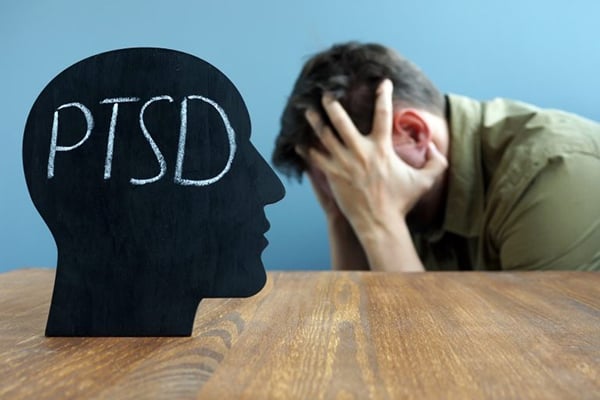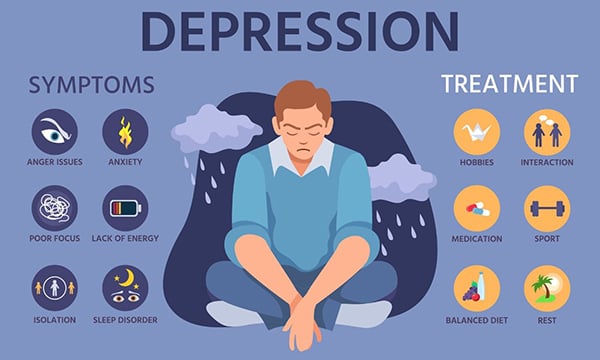Why is cannabis so effective in treating post-traumatic stress disorder (PTSD)

Why is cannabis so effective in treating post-traumatic stress disorder (PTSD)

Cannabis use is widespread among veterans suffering from post-traumatic stress disorder (PTSD). PTSD is often an eligible condition in many state's medical marijuana plans.
Why is marijuana so effective for PTSD? How does it interact with the brain and body to help relieve this form of anxiety?
This article will take a closer look at PTSD and the research on how marijuana can help. Finally, we'll offer some advice for novices on the best options for cannabis to treat PTSD.
What is PTSD, and what are the symptoms?

Post-traumatic stress disorder (PTSD) is an anxiety disorder that develops after someone experiences a traumatic (shocking, frightening, or dangerous) event. Of course, most people will recover from a traumatic event, the anxiety symptoms only lasting for the duration of the event and maybe a short time after. However, people with post-traumatic stress disorder cannot get rid of these symptoms.
Sometimes, symptoms start very early (within three months of a traumatic experience), and sometimes they start very late (after a year or more). Despite the timespan, post-traumatic stress disorder (PTSD) symptoms are often characterized by vivid flashbacks and distressing nightmares about the traumatic event.
Clinically speaking, PTSD symptoms fall into four distinct areas:
- Re-experiencing symptoms -- such as nightmares, flashbacks, or terrifying thoughts.
- Avoidance symptoms -- Avoiding certain places, events, or objects that remind you of the traumatic event.
- Reactivity symptoms -- Feeling nervous, easily startled, having trouble sleeping, and angry outbursts.
- Cognition and emotional symptoms -- such as negative thoughts about oneself or the world, feelings of guilt or blame, loss of interest in activities once enjoyed, and difficulty remembering key aspects of traumatic events.
In many cases, PTSD symptoms often have triggers. For example, if you are in a car accident and a red car hits you, you may react with fear or anxiety whenever you see a red car.
Moreover, it is difficult to determine what counts as a traumatic event and what does not. This is because people react differently to trauma - so what is traumatic for one person may not be for another. In fact, one study found that PTSD may be overdiagnosed, and, in turn, many people are being treated when they may have other forms of anxiety.
How does fear work in the brain and body?
When we first experience fear, we often have an involuntary fight-or-flight response. It's a natural phenomenon where our brains and bodies decide to fight or avoid threatening stimuli. With this response, we may experience the following changes:
- Peripheral vasoconstriction
- Dilation of the central blood vessels around vital organs
- Increased respiratory rate
- Muscle tension (may cause goosebumps)
- Rapid heartbeat
The response first occurs in the amygdala, a bundle of neurons that is part of the limbic system. From there, the amygdala sends signals to the hypothalamus to activate the pituitary gland in our nervous system. This causes an endocrine (or hormonal) response in other body parts.
Through the occurrence of this systematic event, we will get a dose of adrenaline that will make us either fight or flee. This adrenaline is the only reason our bodies produce the response above, which gives us a better chance of fending off threatening stimuli. This response is hardwired into us and is part of our survival instincts.
Unfortunately, this reaction sometimes occurs when there is no threatening stimulus - as observed in those with post-traumatic stress disorder (PTSD). While there may be a reason for the reaction (i.e., a trigger like the red car in the example above), more often than not, this reason is an unwarranted overreaction to a perceived threat that isn't there.
How does cannabis interact with our fear response?
In order to relieve the symptoms of PTSD, it is crucial to reduce this physical response. Fortunately, cannabinoids such as tetrahydrocannabinol (THC) and cannabidiol (CBD) may play a crucial role in this.
When cannabis is consumed, the cannabinoids found in plants (phytocannabinoids) act directly with the cannabinoids found in the body (endocannabinoids). In particular, THC binds to the CB1 receptors found in the amygdala, where our fear response begins.
Since THC targets the same receptors, it "signals" an emotional response to other parts of our body (as described above), which can relieve anxiety or cause paranoia. The factors that determine which reaction you experience depend on various factors, including previous cannabis experience, dosage, and your overall personality.
That's why marijuana can cause anxiety in some people and relieve it in others. However, it should be noted that more research is needed to fully understand this process.
Most researchers agree that low doses of THC can have an anti-anxiety effect. Some studies have found that THC can even exert its medicinal benefits without causing a psychoactive reaction.
However, because of their psychoactive properties, some people prefer to treat PTSD with non-psychoactive cannabinoids, such as CBD, cannabinol (CBG), or cannabinol (CBN). In particular, CBD has a way of balancing our endocannabinoid system (ECS), a network of chemical signals and cell receptors responsible for many bodily functions, such as learning and memory, emotional processing, pain control, and sleep.
Research treating PTSD with cannabis
A recent study found that one-third of people who use marijuana in states where medical marijuana is legal cite PTSD as the qualifying reason.
However, research on cannabis and PTSD is so lacking that we cannot conclude whether it is beneficial (or harmful). So far, we know the following:
- Some research suggests that CBD may be a valuable tool to reduce the effects of traumatic events immediately after they occur.
- A 2016 study found that drugs that interact with ECS, including THC and CBD, may help reduce PTSD symptoms.
- A 2016 study found that CBD, when applied to the skin, effectively reduced anxiety and sleep problems in children with PTSD.
- A 2019 study found that people with PTSD experienced a reduction in symptoms while taking CBD capsules along with traditional psychotherapy protocols.
- A 2018 literature review showed that when CBD is taken with THC, treatment for post-traumatic stress disorder (PTSD) is better.
- According to Forbes, two recent studies have shown that phytocannabinoids can reduce activity in the amygdala and even help erase traumatic memories.
Which cannabis products are best for post-traumatic stress disorder?
According to the research looked at for this article, CBD products have had some of the best results in reducing CBD symptoms. This may be because it does not cause psychoactivity, so there is no risk of inducing paranoia.
If you want to try CBD, we highly recommend ingesting it (i.e., tinctures/oils, gummies, and other foods). These tend to last the longest (about 6 hours). These may be more beneficial for those who wish to reduce PTSD symptoms throughout the day.
However, if you want to try THC, we recommend smoking or vaping indica-dominant strains or cannabis at night. Indica is known for its sedative effects and is useful for people with insomnia. In addition, some studies suggest it may help reduce nightmares.





